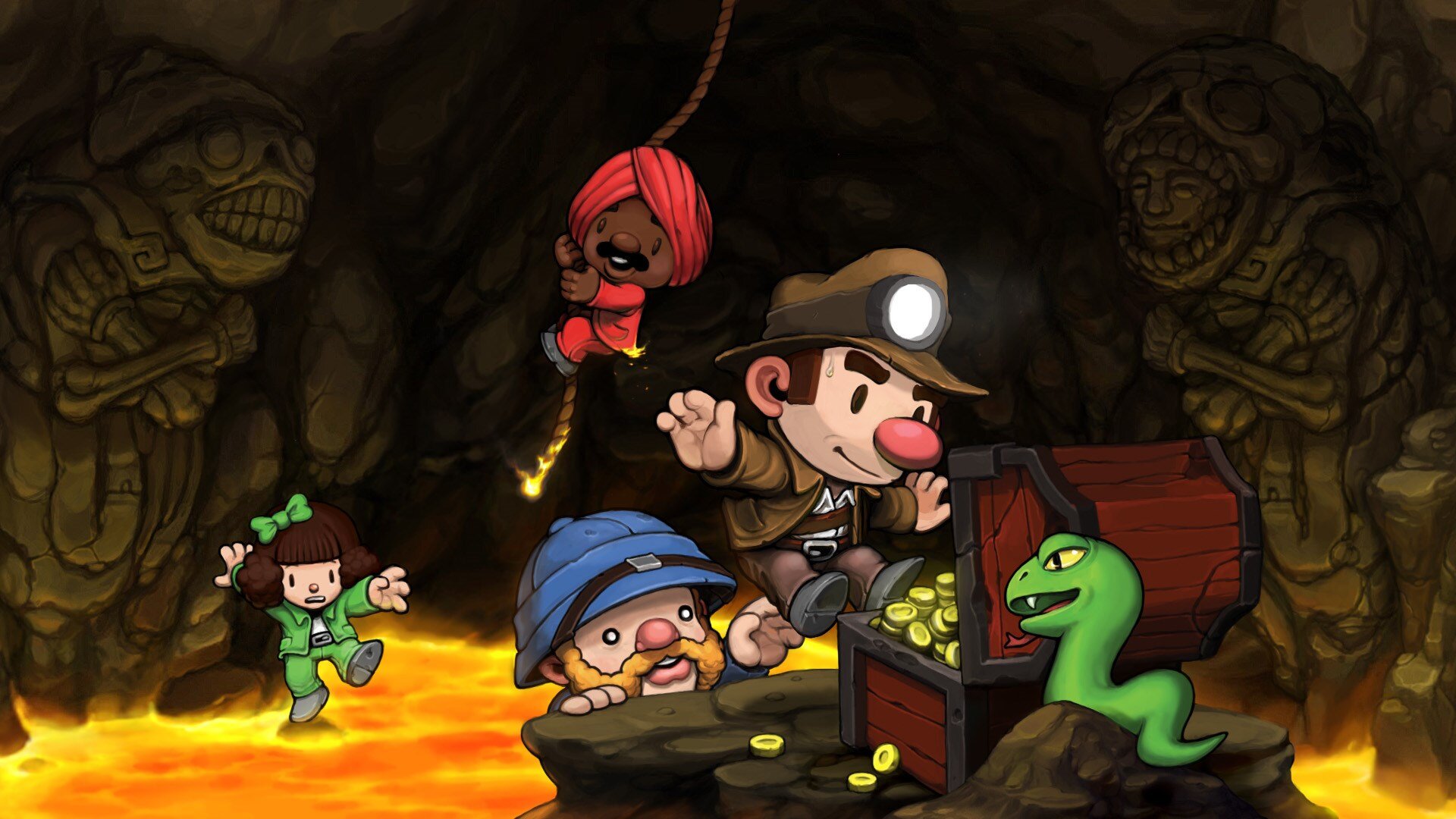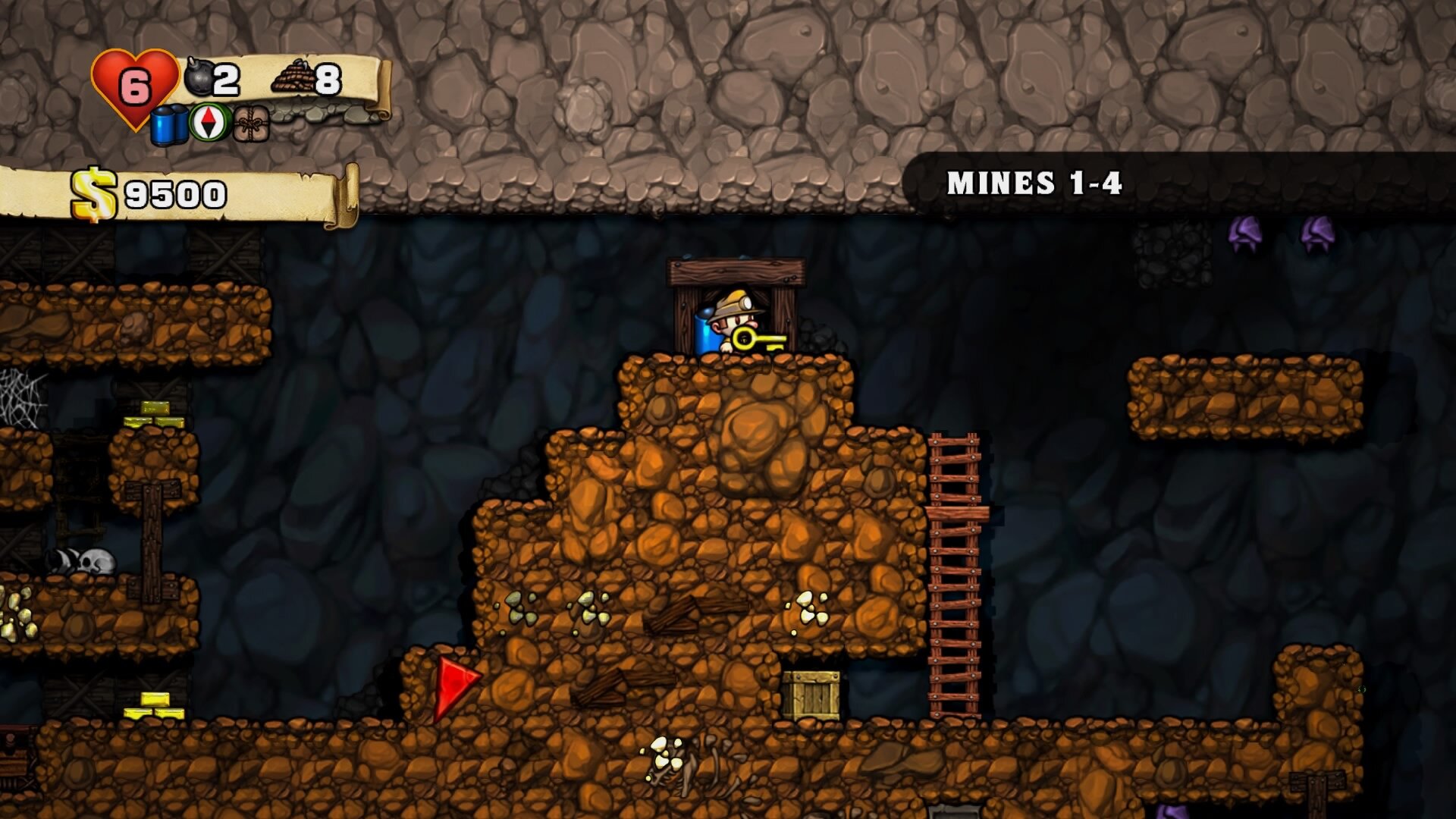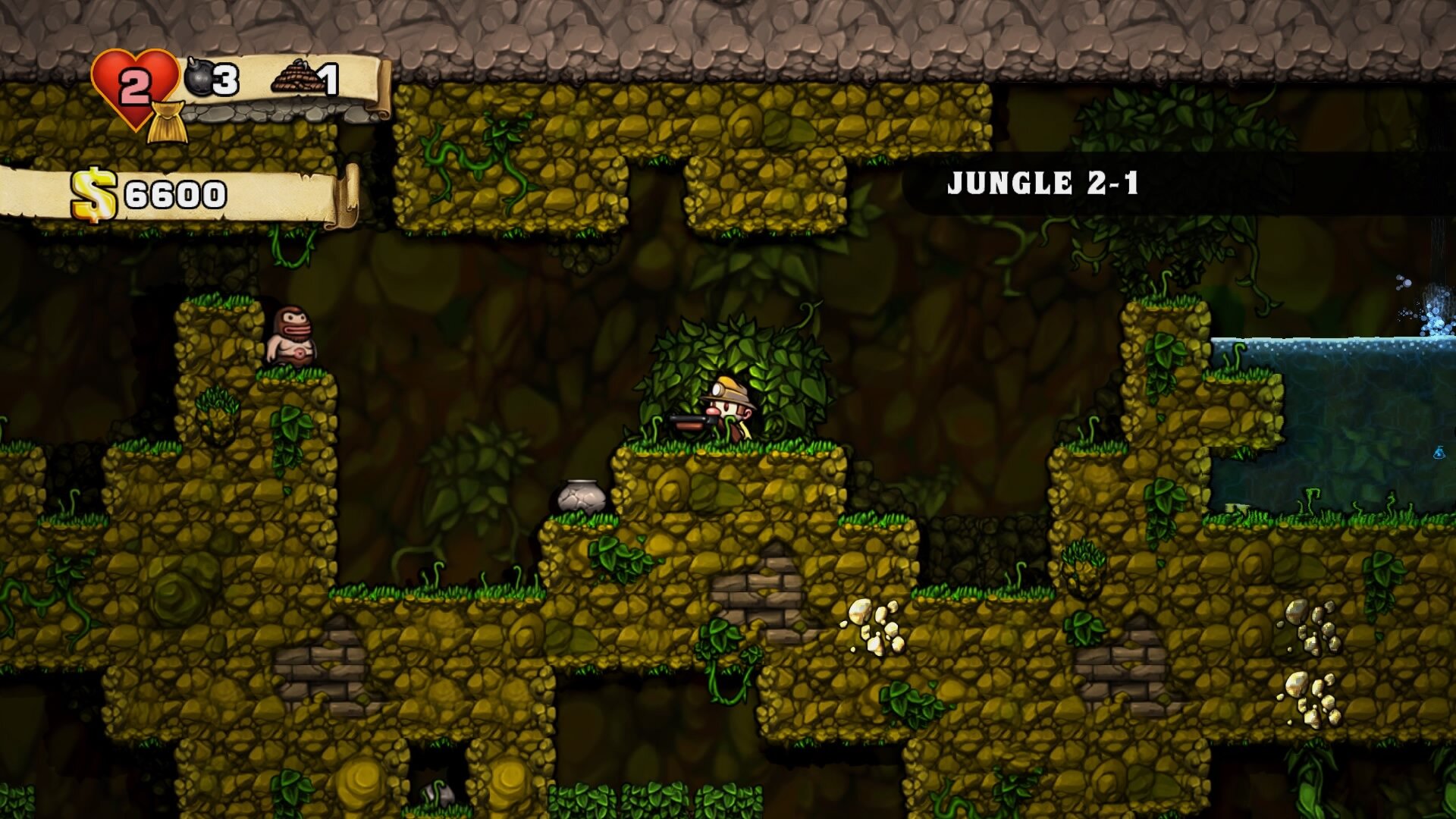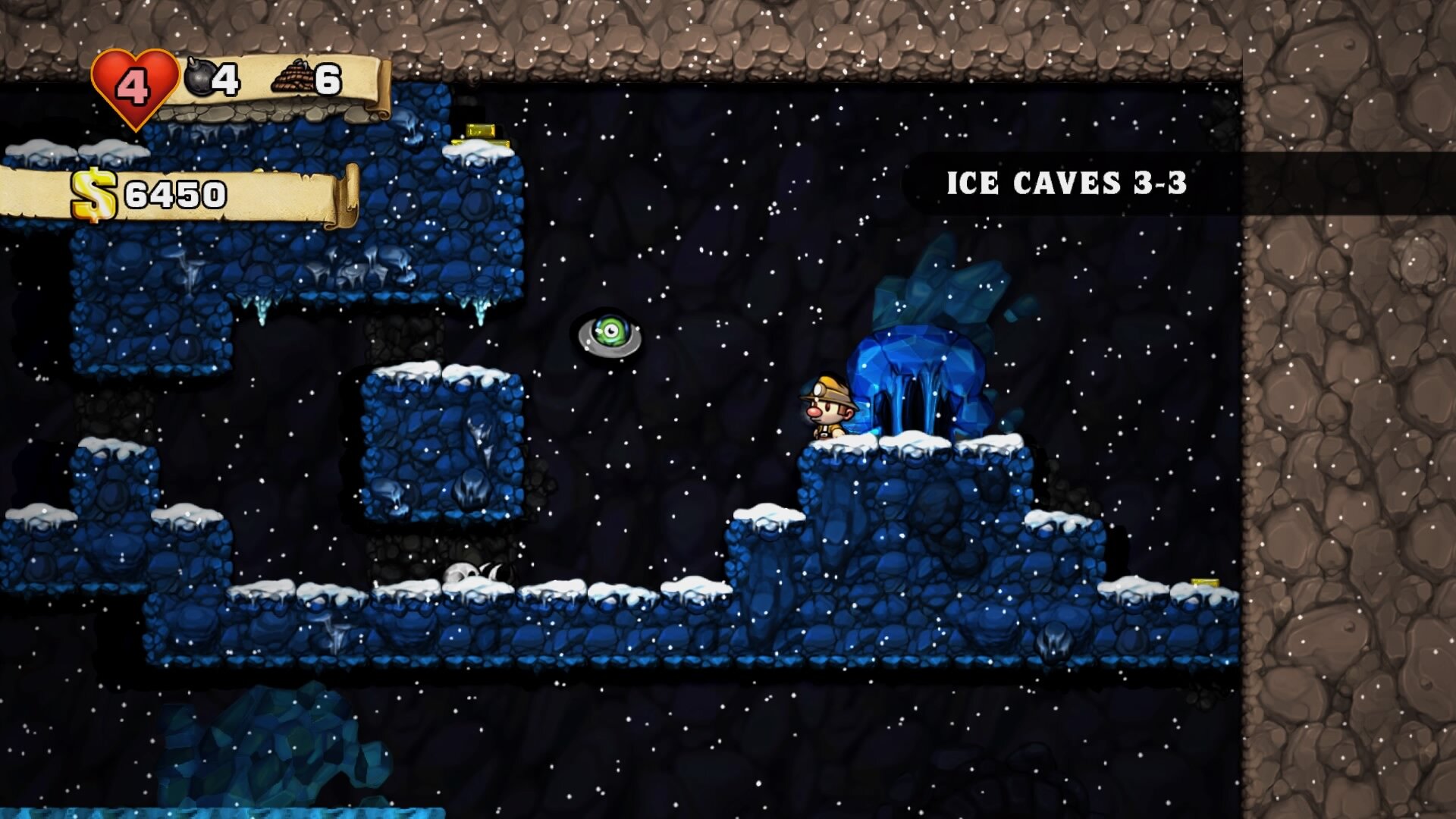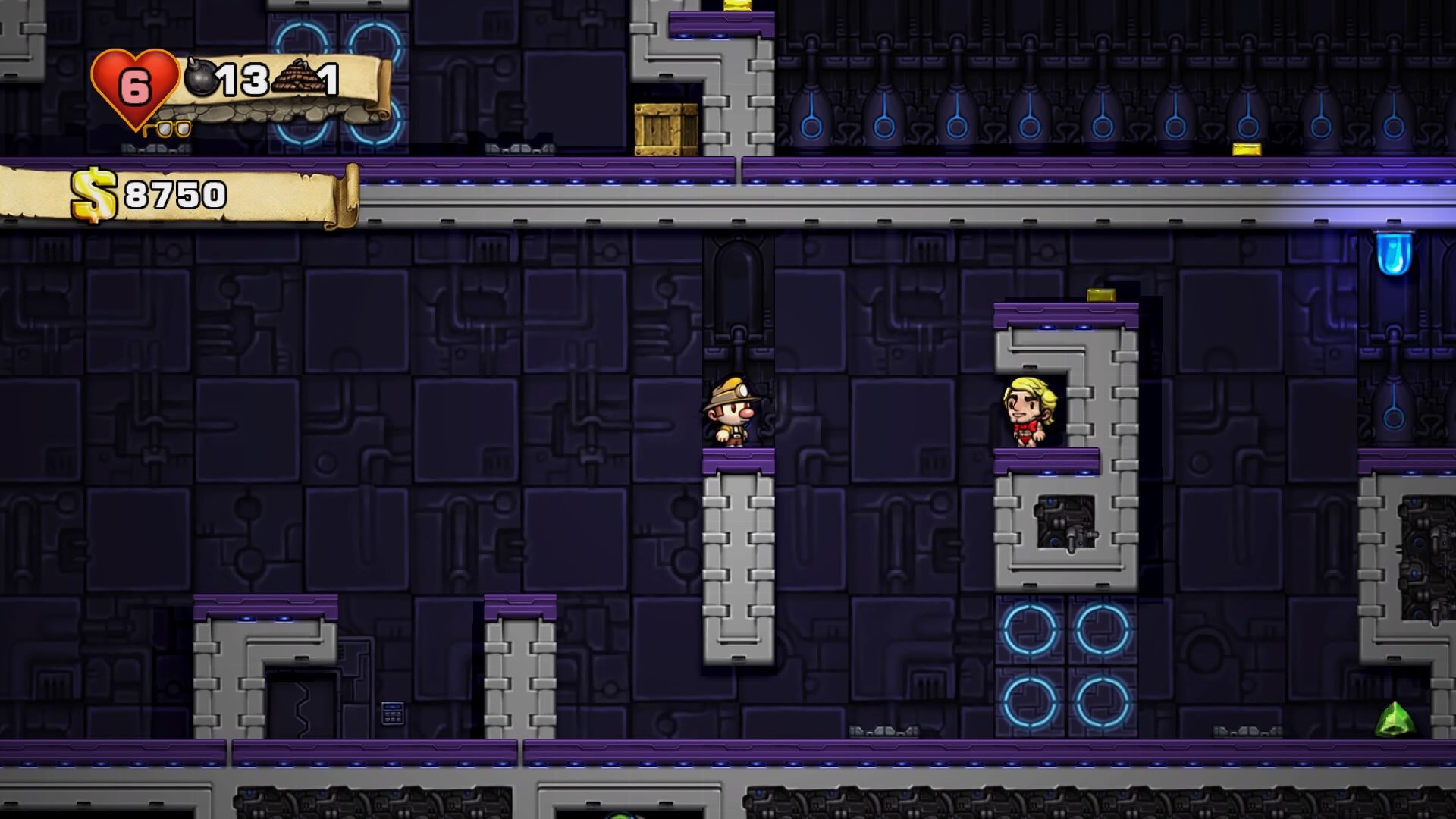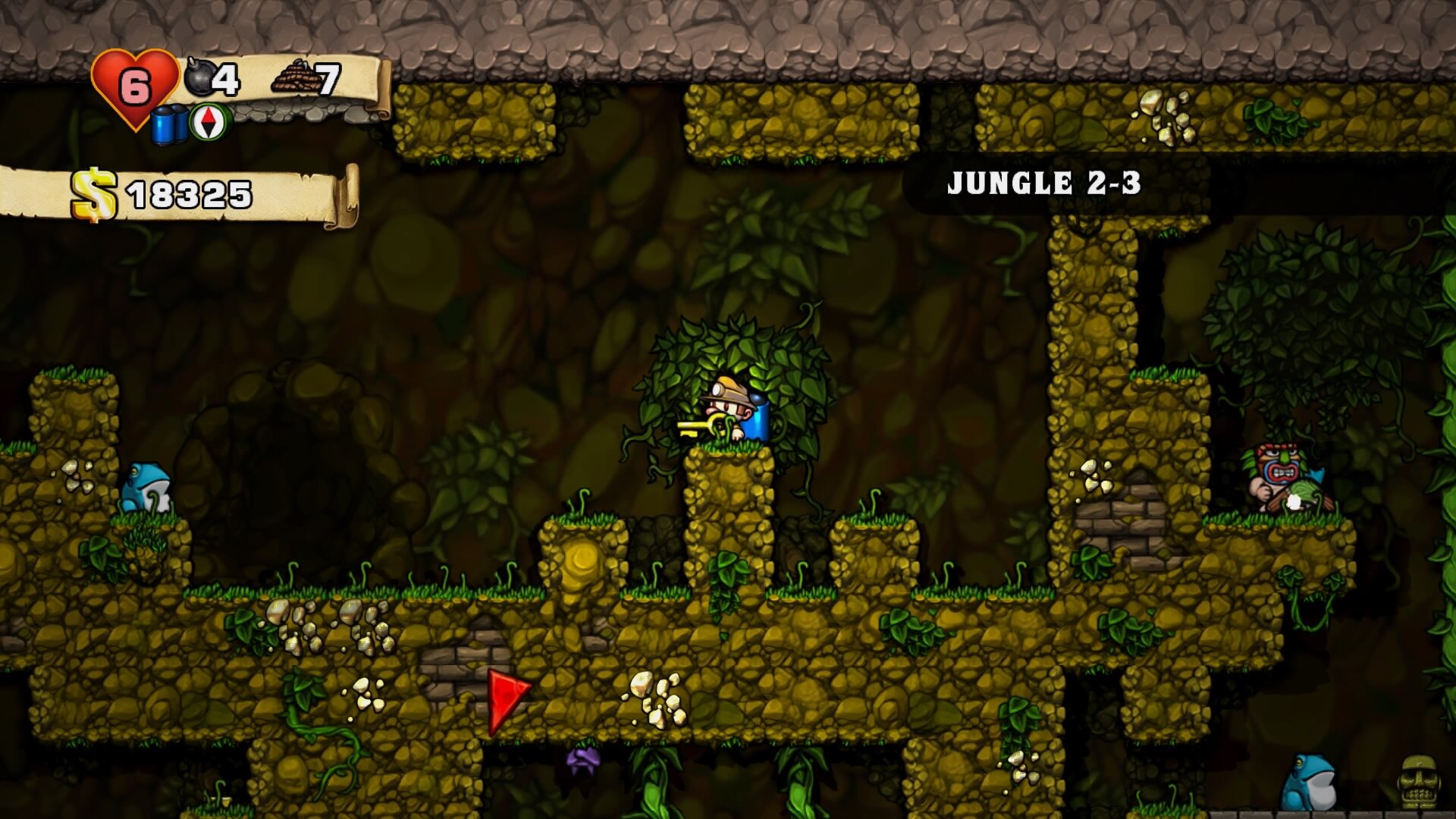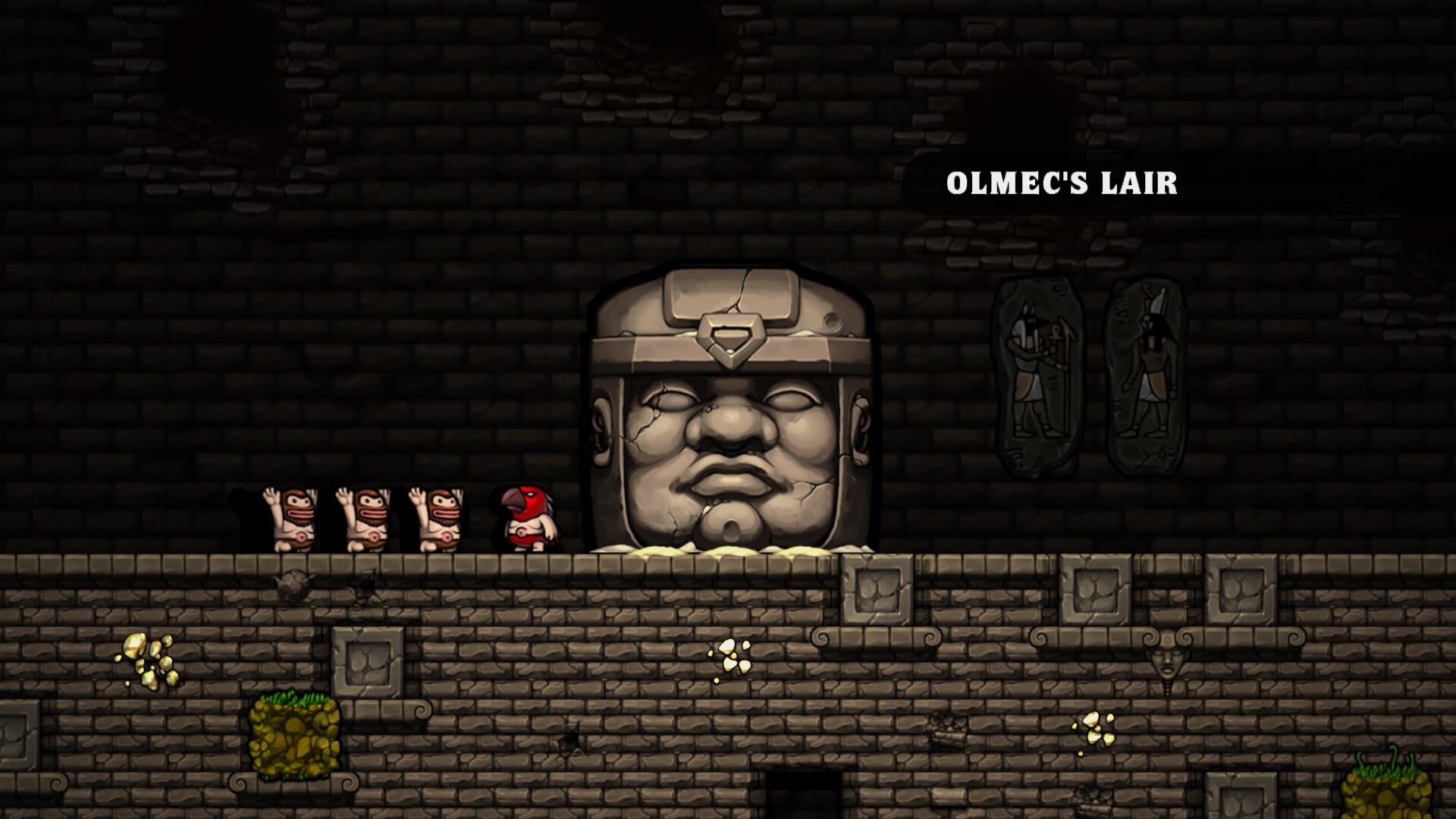Spelunky review
Spelunky the Game
The original Spelunky was actually a freeware game released for Windows in 2008. I distinctly remember downloading and playing it on my old Toshiba laptop while I was living in Japan in 2011. It had an old-school pixel art aesthetic, but even in that version, the levels were random and the environments were fully destructible. I remember being in awe of the game, the sheer brilliance of the concept so obvious to a platforming zealot like myself.
The original is now called Spelunky Classic, and you can still play it for free on Windows.
In 2013, after I moved back to Seattle, I bought a PS3. And the first PSN game I purchased was Spelunky HD, the upgraded commercial release. This quickly became my favorite game on PS3. Then, when I got a PS4, I noticed that my purchase of Spelunky HD was also playable on the new console. Suddenly, my Spelunky was my favorite game on the PS4 as well.
So what, pray tell, is Spelunky? I’m glad you asked!
Spelunky is the original rogue-like (or is it rogue-lite?) platformer game. The game’s designer, Derek Yu, aimed to mix rogue-like elements with 2D platforming, theming his game around an adventurer descending deeper and deeper into caves to collect treasure. The 1983 game Spelunker was a clear inspiration, but there are certainly many nods to the Indiana Jones films as well, such as the main character’s overall appearance and the fact that he wields a whip.
Rogue-like game are usually some kind of dungeon crawl, characterized by procedurally generated (random) levels, turn-based gameplay, tile-based graphics, and permanent death of the player character. While not a dungeon crawler or RPG, Spelunky does feature procedurally generated levels and permadeath. And this is where it gets its reputation for being brutally hard.
There’s no lives system in this game. Die even once and it’s game over man, game over. You start with just four hearts for health, meaning you can potentially take a few hits without being done in, but there are still plenty of things that can kill you in one hit. As you descend further and further down into the caves, you collect gold and jewels, and their monetary value basically acts as your score.
Your adventurer (and you have several characters to choose from this) is always armed with their trusty whip, the standard tool for killing smaller enemies, or used to break pots and crates. Additionally you start with the crucial spelunking gear of four bombs and four ropes. Your bombs can be used to blast a path through the cavern walls—you know, if some cave renovation appears necessary—or also to explode your enemies. (Just be careful not to blow yourself up instead!) Ropes can be deployed wherever you’d like, enabling you to climb out of pits, or climb safely down into one.
It’s possible to find extra bombs or ropes in supply crates hidden throughout your journey. There’s also a shop that appears randomly which will gladly sell you supplies. Beyond bombs and ropes, the shops sell other helpful equipment like a compass, climbing gloves, spring shoes, spike shoes, and even weapons!
Since the loot your collect along the way serves as your score, spending money at shops becomes a strategic decision. And sometimes the item you want to purchase costs more gold than you can afford. The resulting situation is that many players will opt to steal from a shop instead of paying. This complicates matters because the shopkeepers are vindictive and extremely dangerous.
Despite being older-looking bearded gentlemen, the shopkeepers in Spelunky having superhuman strength. If provoked, they can throw you around like a rag doll. To make matters worse, every shopkeeper is armed with a shotgun, and they love nothing more than to unload on shoplifters with both barrels. Take my word for it, the deadliest entity in Spelunky is not Anubis (Egyptian god of death), it’s an angry shopkeeper.
Spelunky has four main worlds, each one comprised of four stages. (There are a couple hidden areas too, but don’t mind that.) You start off in the Mines, the second area is the Jungle, then the Ice Caves, and finally the Temple. While you might expect the game’s difficulty to increase steadily along the way, I wouldn’t say it does. The Mines present a fairly serious challenge right off the bat, and then the Jungle is definitely even harder. But the Ice Caves feel fairly relaxed by comparison, maybe the easiest area to contend with. Then the Temple is about as hard as the Jungle again, maybe a bit tricker.
As you might expect, your spelunking will bring you face to face with a variety of threats, but living and not. You’ll have to contend with creatures like bats, snakes, hopping spiders, spinner spiders, giant spiders, cavemen, tiki men, piranha, blue frogs, fire frogs, giant frogs, monkeys, mantraps (carnivorous plants with a taste for human flesh), yetis, vampires, mummies, and more! Plus there are the traps: spike pits, arrow traps, tiki traps, powder boxes, rolling boulders, lava, crush traps, and more!
Basically everything in Spelunky is trying to kill you (and often succeeding). But don’t be afraid of dying in this game. Death is frequent, sure, but it’s really the only way to improve. Plus some of the crazy ways you die are just laugh-out-loud funny. Ultimately the real fun is found in the journey, not the destination. And thanks to the random level design, your journey can be infinite! Yay…?
My only real complaint about Spelunky HD is that the run button is mapped to the R Button. I understand why it’s there, after all, the four face buttons are already taken up by Jump, Whip, Bomb, and Rope functions. Unfortunately it’s just not super comfortable to hold a shoulder button down the entire time—which thanks to Super Mario Bros, is the way the good lord intended platformers to be played. My wrist has actually cramped up from holding the R Button while playing Spelunky.
(Luckily this is fixed in Spelunky 2, where the standard controls are set to run by default; pressing a shoulder button causes your character to walk instead. While this might sound like a pretty drastic change, it’s actually a much-needed quality-of-life improvement, and an absolute godsend for longer play sessions.)
Spelunky has no progression system to speak of—no learning new moves, no way to earn permanent upgrades, no leveling up, nothing. Especially in terms of platforming games, I actually prefer it this way, as opposed to the game gradually doling out new techniques to change the gameplay. It’s one of the things I loved about Donkey Kong ‘94 and Super Mario 64, and what makes me less interested to play something like Banjo-Kazooie.
There are three unlockable shortcuts—which will allow you to start runs from levels 2-1 (the Jungle), 3-1 (the Ice Caves), or 4-1 (the Temple)—and opening the paths can provide at least a small sense progression. Also, being able to start from an area other than the goddamn Mines is a refreshing change of pace. However, even the process of unlocking the shortcuts can be a legitimate challenge. In between areas, you’ll encounter the Tunnel Man, a helpful chap who can dig the shortcuts for you if you presented with some specific materials (bombs, ropes, etc.). In order to complete the final shortcut though, he’ll ask you to bring him the gold key from the Mines. This means you have to carry an object through something like 10 levels—completely through the Jungle and the Ice Caves—and make past 3-4 with it still in your grasp. That is…uh, let’s say…not easy.
The lack of progression can be frustrating though, and honestly I can see why this game is not for everyone. Playing run after run after run, only to find yourself at the same place you started, is potentially demoralizing. Especially when you think of what you could have been doing instead of running this masochistic hamster wheel of a video game.
However, when you do make it further than you had before, when you see something you’ve never seen in the game yet, victory tastes that much sweeter. Even the small wins become meaningful, because your successes in this game are truly yours.
You’ve had no help, no easing of the difficultly curve, no handholding, nothing. You were thrown in at the deep end and left to die, after all, so whatever you’ve achieved is all you. And overcoming that challenge makes for some intense satisfaction. It can just be, you know, genuinely hard to come by.
Spelunky the Book
But wait, there’s more!
Not only is Spelunky a great game—arguably one of the best of all time—it’s also a great book! Boss Fight Books has published Derek Yu’s own account of creating Spelunky (both Classic and HD), and it is a truly phenomenal read.
The description on Boss Fight’s website is really quite good:
Spelunky is Boss Fight's first autobiographical book: the story of a game's creation as told by its creator. Using his own game as a vehicle, Derek Yu discusses such wide-ranging topics as randomization, challenge, indifferent game worlds, player feedback, development team dynamics, and what's required to actually finish a game.
If you’re a Spelunky fan, this is 209 pages of pure gold. Seriously, order yourself a copy right now! But even if you’re only interested in game design more generally, it’s still an essential work. I recommended this book to my brother based simply on how Derek discusses the Legend of Zelda games alone. There’s so much great discussion in here about making art, creating games, and even just finishing projects—which Derek describes as a necessary skill that one should practice.
Actually, I’m just now realizing that Spelunky was the last physical book I’ve actually read. For the past couple years now I’ve been listening to audio books, which is handy when your preoccupied with other tasks, like walking somewhere or doing the dishes. But I read this while my wife and I traveled through Switzerland one December. I read it some on the plane, some on the train, and most of while killing time in various cafes around Basil. My copy even has the coffee stains to prove it!

